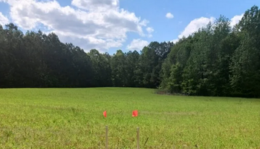Land Selection;
Embarking on an off-grid homestead journey is a dream for many, but finding the perfect plot of land to turn that dream into reality is no small feat. The process requires careful consideration, thorough research, and a keen eye for detail. In this article, we’ll guide you through the steps of land Selection for your off-grid homestead, conducting due diligence research, determining suitability, and making an offer with a “contingent on passing percolation test statement.

**1. Define Your Vision:
Before you start your land search, have a clear vision of what your off-grid homestead will look like. Consider factors like location, size, terrain, access to water sources, and solar exposure. This vision will guide your search.
**2. Research Potential Areas:
Research potential areas that align with your vision. Look for regions with favorable climate conditions, zoning regulations that support off-grid living, and proximity to essential amenities or services.
**3. Work with a Realtor:
Consider working with a realtor experienced in off-grid properties. They can help you navigate the market and identify suitable listings.
**4. Site Visits and Inspection:
Visit potential properties in person. Inspect the land to ensure it meets your criteria and vision. Pay attention to factors like soil quality, drainage, existing structures, and local flora and fauna.
**5. Due Diligence Research:
Perform due diligence research, including:
- Title Search: Verify property ownership and any existing encumbrances.
- Permit Requirements: Understand local zoning regulations and permit requirements for off-grid living.
- Utility Access: Determine the availability of utilities like water, electricity, and sewage systems.
- Environmental Considerations: Investigate potential environmental issues, such as flood zones or endangered species habitats.
**6. Percolation Test:
A critical step in your due diligence is the percolation test. This test assesses the soil’s ability to absorb and filter wastewater, which is crucial for installing a septic system. Make your offer contingent on a successful percolation test.
**7. Making an Offer:
When you find the ideal property, make an offer with a “contingent on passing percolation test statement.” This contingency protects you in case the land doesn’t pass the test or requires costly modifications.
**8. Negotiation and Closing:
Negotiate the terms of the sale with the seller. Once agreed upon, proceed with the closing process, which includes title transfer, inspections, and fulfilling any other contractual obligations.
**9. Start Your Off-Grid Journey:
After closing the deal, it’s time to start building your off-grid homestead. Begin by designing your sustainable systems for power, water, and waste management.
In Conclusion; Finding the perfect land for your off-grid homestead is a rewarding yet meticulous process. By defining your vision, conducting due diligence research, and using a “contingent on passing percolation test statement” when making an offer, you’ll not only secure a piece of land that aligns with your dream but also ensure its suitability for your self-sufficient lifestyle. With the right land as your foundation, your off-grid adventure can truly begin.
